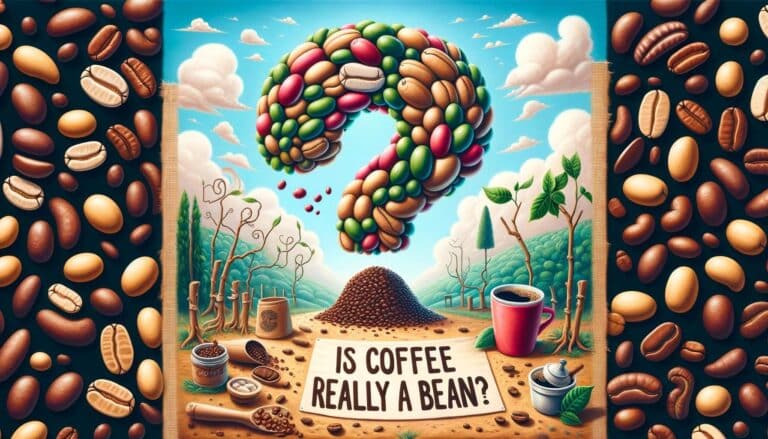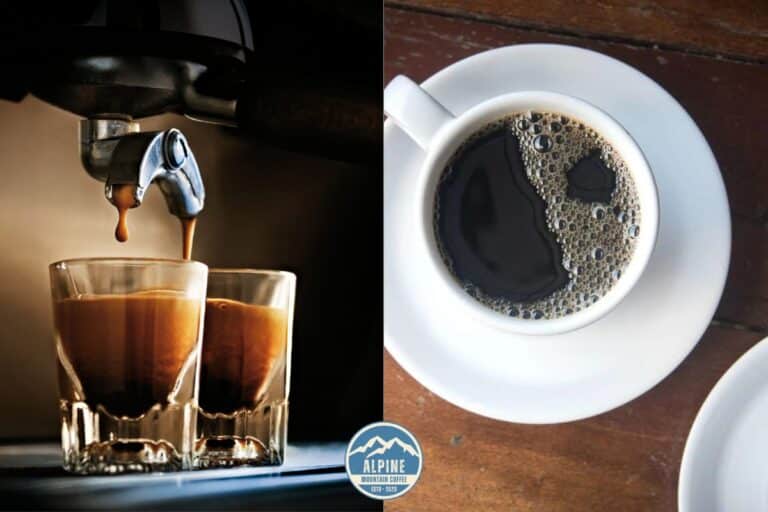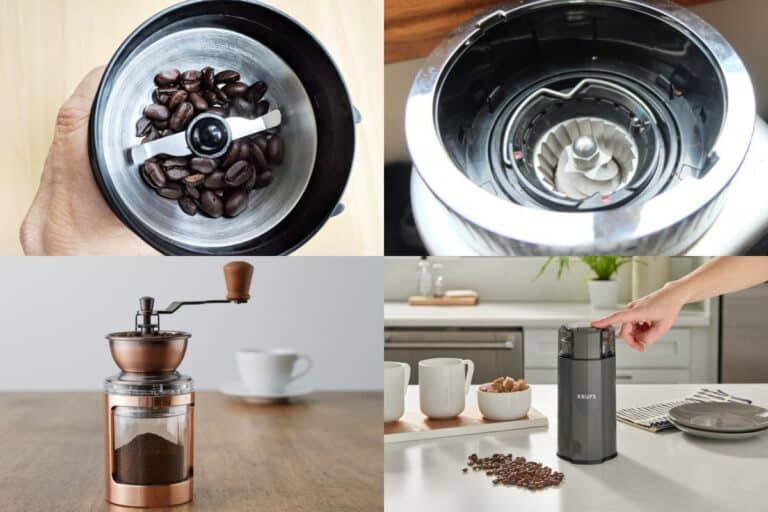The term ‘espresso’ comes from the Italian word ‘express,’ which translates to ‘quick.’ The history of espresso dates back to the late 19th and early 20th century in Italy. During this time, inventors were seeking ways to brew coffee faster due to the Industrial Revolution’s demand for quick meals. Angelo Moriondo is credited with developing the first known espresso machine in 1884, which used steam to speed up the brewing process. Later advancements by Luigi Bezzera and Desiderio Pavoni further refined this process and made espresso more accessible. Achille Gaggia didn’t develop the modern espresso machine as we know it until after World War II. This machine introduced the high-pressure extraction method, which gave espresso its distinctive crema and robust flavor.
Espresso is a method of brewing coffee that forces a small amount of nearly boiling water under pressure through finely ground coffee beans. It is often misconstrued that espresso refers to a particular type of bean or roast level, but this is a common misconception. Any type of coffee bean can be used to make espresso, but the grind level and the brewing method distinguish it from other coffee beverages.
Another common misconception is that espresso is inherently stronger or more caffeinated than regular coffee. While it’s true that espresso is more concentrated, a typical serving is much smaller than a serving of regular coffee. Therefore, a cup of drip coffee usually contains more total caffeine than a single shot of espresso.
Lastly, many believe that espresso should be extremely bitter. While it is true that espresso can have a higher level of bitterness due to the extraction process, a well-prepared espresso should also contain a balance of sweetness and acidity, resulting in a complex and enjoyable flavor profile.
The Making of Espresso
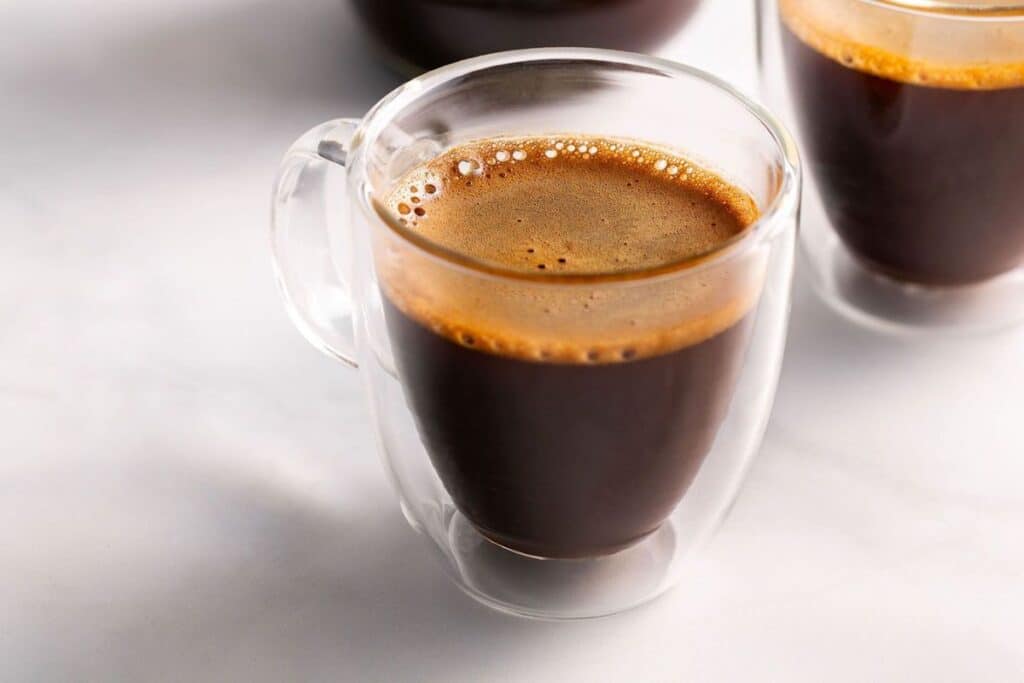
Description of the espresso brewing process
The process of making espresso begins with selecting and grinding the coffee beans. For espresso, the beans should be ground to a consistency similar to table salt. Too coarse a grind will result in a weak shot, while too fine a grind can lead to over-extraction.
Once the beans are ground, they are packed into a part of the espresso machine known as the portafilter. This is a crucial step called ‘tamping,’ which involves applying pressure to the grounds to ensure an even extraction.
The portafilter is then attached to the espresso machine, and hot water (around 195-205°F or 90-96°C) is forced through the coffee grounds under pressure, usually 9 bars for a traditional espresso. This process, which takes between 20-30 seconds, results in a shot of espresso, topped with a layer of crema, which is a foam of oils and proteins from the coffee.
The Importance of Coffee Beans in Espresso
The coffee beans used can drastically affect the flavor of the espresso. The region, altitude, soil, and method of processing coffee beans after harvesting all have an impact on each variety’s unique flavor profile.
Espresso is typically made with a blend of beans to achieve a balance of flavors. The beans should be fresh, ideally used within a month of being roasted, and should be ground just before brewing to preserve their flavor.
It’s worth noting that while any type of coffee bean can be used to make espresso, some types are particularly well suited to the high-pressure brewing process. Arabica beans are often favored for their nuanced flavors, while Robusta beans are sometimes included in blends for their crema-producing abilities and higher caffeine content.
Equipment Needed to Make Espresso
Making espresso at home requires some specific equipment. At the core of this is the espresso machine, which comes in several different types, including manual, semi-automatic, fully automatic, and super-automatic models.
A grinder is also necessary to ensure the coffee has the correct consistency. Burr grinders are typically recommended over blade grinders because they provide a more consistent grind.
Accessories such as a tamper for packing the coffee into the portafilter, a frothing pitcher if you intend to make drinks like Cappuccinos or Lattes, and a knock box for disposing of used coffee grounds can also be useful in the process of making espresso.
The Unique Qualities of Espresso
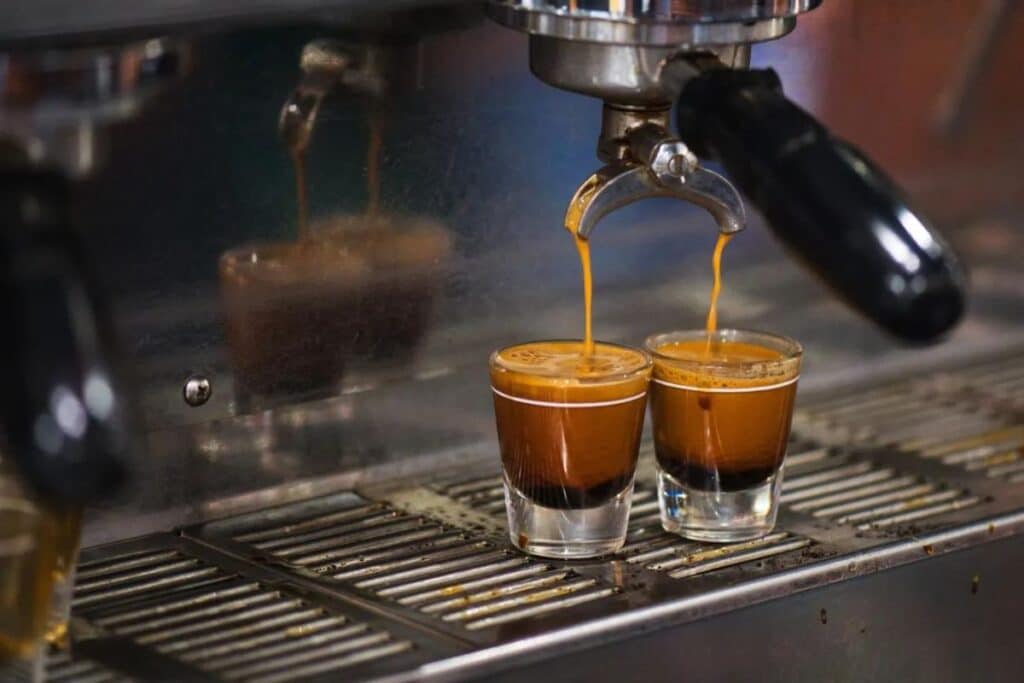
Understanding the Crema, Body, and Heart of an Espresso
An espresso shot is composed of three main parts: the crema, body, and heart. The crema is the topmost layer, a thin, frothy foam that forms during the extraction process. It is light in color and can offer nuanced aromatics and flavors. The presence of crema indicates a well-extracted shot of espresso.
The body is the middle layer, containing the bulk of the shot. It is here that the primary flavors and textures of espresso reside. It should be rich and well-rounded in taste.
The heart is the bottom layer of the shot and the most concentrated part. It is usually dark and bitter and provides the foundational taste of espresso.
Taste Profile Compared to Other Coffee Beverages
Espresso has a distinct taste profile compared to other coffee beverages due to its unique brewing process. It is often more concentrated and rich, with a full body and an intense flavor profile. A well-brewed shot of espresso should be balanced, with a hint of sweetness, a touch of acidity, and a noticeable bitterness.
In contrast, other coffee drinks, such as drip coffee or French press, have a more mellow flavor because they are brewed with more water over a longer period of time. Additionally, they might retain more of the subtle aromas and flavors of the coffee beans, which an espresso shot’s intensity can overpower.
Nutritional Content and Caffeine Level Comparison
In terms of nutritional content, espresso is very low in calories, with a single shot containing only about 5 calories. It also provides a small amount of vitamins and minerals, including vitamin B2, B3, and magnesium.
When it comes to caffeine, a shot of espresso contains approximately 63 mg of caffeine. However, this is a much more concentrated dose than you’d get from a standard cup of coffee, which contains about 95 mg of caffeine but is also served in a much larger volume. It’s also worth noting that the caffeine in espresso is extracted more efficiently due to the pressure involved in the brewing process, which may lead to a more immediate and intense caffeine hit.
The Cultural Importance of Espresso
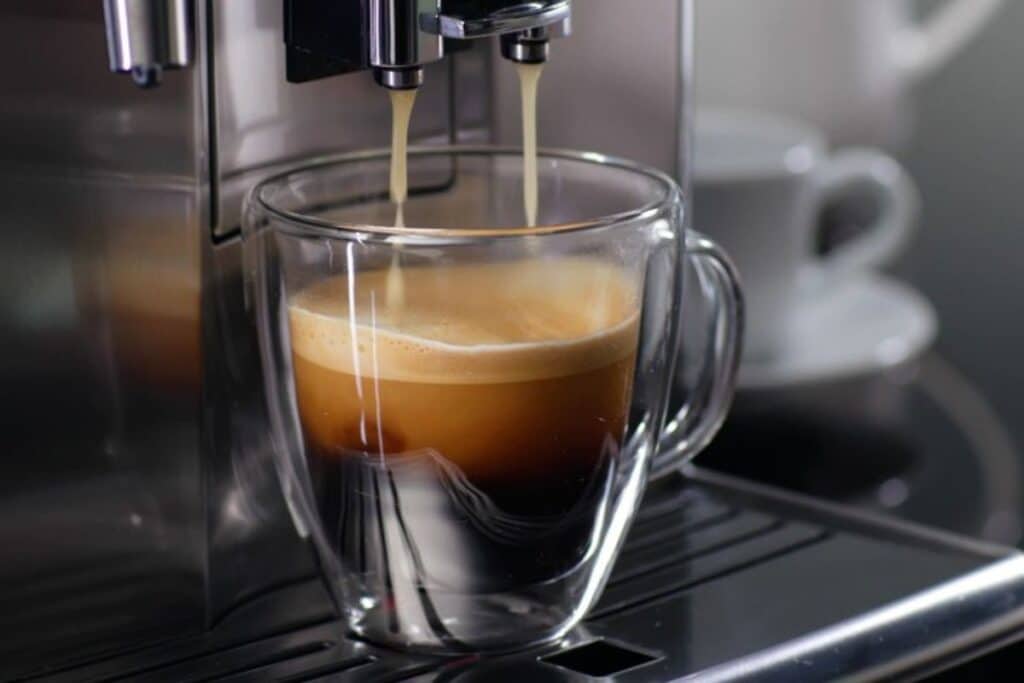
Role of Espresso in Different Cultures Around the World
Espresso plays a significant role in numerous cultures worldwide.
In Italy, its country of origin, espresso is deeply embedded in daily life. Italians typically start their day with a quick espresso at the bar counter, often consumed standing up. The mid-morning espresso break, ‘la pausa,’ is a common routine to refresh and refuel during the workday.
In Australia and New Zealand, espresso forms the backbone of the thriving café culture. Flat white, a popular espresso-based drink, originated in this region.
In the United States, the influence of espresso has grown dramatically over the past few decades. The third wave coffee movement has resulted in an increase in specialty coffee shops where espresso is the star.
Impact on the Daily Routine and Social Interactions
Espresso acts as both a personal ritual and a social connector. In many cultures, the act of drinking espresso is often tied to moments of pause in the day, offering a moment of relaxation and reflection.
On the social side, espresso often brings people together. From business meetings to catch-ups with friends, espresso serves as a social lubricant. It has become a symbol of hospitality in many cultures; offering someone an espresso is an act of welcome.
The Influence on Coffeehouse Culture
Espresso has significantly impacted the coffeehouse culture. The coffeehouse or café, historically a place for social interaction and exchange of ideas, has evolved into a space where the crafting and consumption of espresso and its derivatives are central activities.
The popularity of espresso has given birth to a plethora of espresso-based drinks, such as cappuccinos, lattes, and macchiatos, broadening the appeal of coffeehouses.
Baristas, skilled in the art of making espresso, have emerged as key figures in coffeehouse culture, with competitions held worldwide to showcase their craft. Espresso has thus elevated the coffeehouse experience from simple beverage service to a display of culinary craftsmanship.
Espresso in Culinary Arts
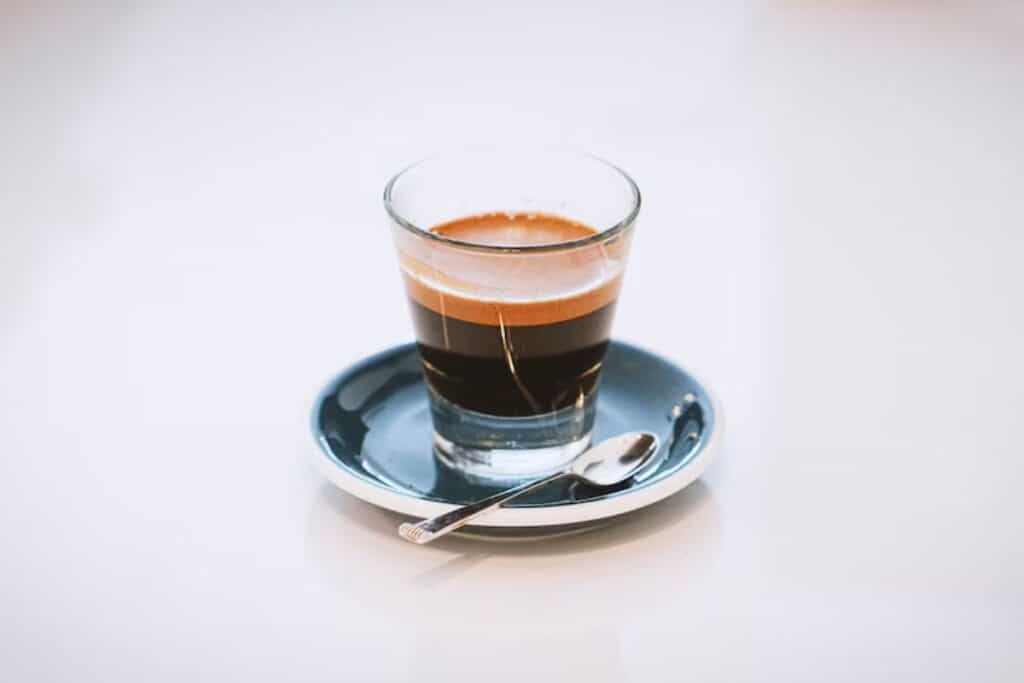
Espresso as a Standalone Beverage
As a standalone beverage, espresso is appreciated for its bold, concentrated flavor and the ritual involved in its preparation and consumption. It is typically served in small, specially designed cups that help maintain the beverage’s temperature. In many cultures, enjoying a shot of espresso can be a daily ritual or an occasional treat.
Role in the Creation of Other Coffee Drinks
Espresso forms the base of many popular coffee beverages, showcasing its versatility. These include:
- Cappuccino: Made with equal parts of espresso, steamed milk, and milk foam. The interaction between the creamy milk and rich espresso creates a harmonious blend.
- Latte: Contains more steamed milk and less foam than a cappuccino, resulting in a milder coffee flavor.
- Macchiato: Means “stained” or “spotted” in Italian. It’s a shot of espresso “stained” with a little milk.
- Americano: Made by diluting an espresso shot with hot water, giving it a flavor profile closer to traditional drip coffee.
- Mocha: A blend of espresso, steamed milk, and chocolate, making for a sweet and creamy coffee drink.
Use of Espresso in Cooking and Baking
Apart from beverages, espresso is also used in cooking and baking to add depth of flavor. Its strong, concentrated taste can enhance other ingredients.
In baking, it’s used in recipes like tiramisu, espresso brownies, and coffee-flavored cakes. Espresso powder is often added to chocolate recipes to intensify the flavor.
In cooking, it can be used in marinades for meats, providing a rich, smoky flavor. It’s also used in sauces, where it lends a unique depth and complexity.
Espresso’s role in the culinary arts, thus, extends beyond the coffee cup, demonstrating its versatility and broad appeal.
The Science Behind Espresso

The Role of Pressure in Extracting Espresso
Pressure is one of the fundamental elements in the process of making espresso. Traditional espresso machines use approximately 9 bars of pressure (which is nine times the atmospheric pressure at sea level) to force hot water through the coffee grounds. This high-pressure extraction leads to a rapid, intense extraction of flavors, creating a beverage that is much stronger and more concentrated than other brewing methods.
The high pressure also results in the formation of crema, the creamy layer of foam on top of the espresso shot, which is full of aromatic oils and proteins. Crema is considered a sign of a well-extracted espresso and contributes to the overall taste and texture of the beverage.
The Chemistry of Espresso Extraction
The process of espresso extraction involves a complex series of chemical reactions. When hot water is forced through the coffee grounds, it dissolves many of the solids within the coffee, creating a solution filled with hundreds of different compounds.
Some of these compounds contribute to the taste of the espresso, including acids, which provide brightness and clarity, sugars, which offer sweetness, and bitter compounds, which add complexity. Others, like oils and colloids, contribute to the body and mouthfeel of the beverage.
Health Benefits and Potential Risks of Consuming Espresso
Several health benefits are associated with moderate espresso consumption. It is rich in antioxidants, which can protect against oxidative stress and inflammation. It also contains compounds that may improve heart health, aid digestion, boost mood and cognitive function, and possibly even reduce the risk of certain types of cancer.
However, it’s important to note that espresso also contains caffeine, which can have side effects like restlessness, insomnia, or increased heart rate in some individuals, particularly if consumed in excess.
The way you enjoy your espresso can also have an impact on its health effects. Adding sugar, cream, or flavored syrups will increase the calorie content and potentially offset some of the health benefits. As with all foods and beverages, balance and moderation are key.
Finally, it’s worth noting that while there is a lot of research on coffee and health, these findings can often be nuanced and are sometimes contradictory. Factors such as genetic differences, lifestyle, and personal tolerance can all influence how espresso or any form of coffee affects an individual.
Conclusion
Espresso’s unique brewing process, yielding a concentrated, rich, and complex flavor profile, sets it apart from other coffee beverages. The ritual of its preparation, whether at home or in a café, and its role as a social connector in many cultures worldwide further enhance its unique charm.
Espresso’s enduring popularity is a testament to its versatility and the deep appreciation for the craft of its preparation. It forms the backbone of the contemporary coffeehouse culture and is the base for many beloved coffee drinks, from cappuccinos to lattes and more. Espresso has not only shaped the way we consume coffee but also the way we socialize, work, and enjoy our moments of pause in the day.
The point of espresso is manifold. It’s a quick and efficient way to deliver caffeine, a rich and complex beverage to savor, a centerpiece for social interactions, and a craft to master. But perhaps most importantly, it’s a small indulgence, a moment of pleasure in a cup. Whether you enjoy it plain, paired with milk, or even incorporated into your food, espresso has something to offer everyone, which is likely why it continues to be loved and appreciated worldwide.
